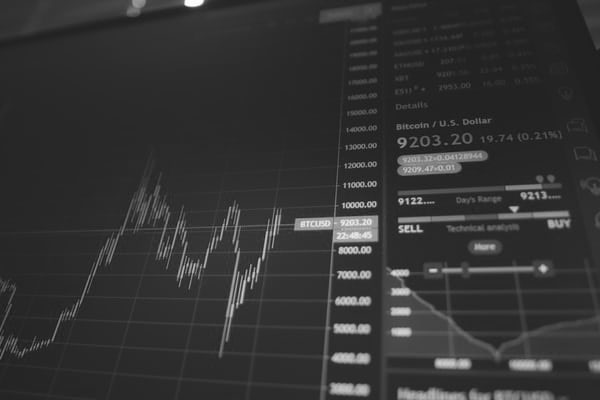Home › Market News › Grain Prices, the VIX Drop, and This Weeks Economic Calendar
The Economic Calendar:
MONDAY: US Holiday: Labor Day (NYSE Closed)
TUESDAY: Motor Vehicle Sales, Factory Orders, 3-Month Bill Auction, 6-Month Bill Auction, 52-Week Bill Auction, Investor Movement Index
WEDNESDAY: MBA Mortgage Applications, International Trade in Goods and Services, Susan Collins Speaks, PMI Composite, ISM Services Index, 4-Month Bill Auction, Beige Book
THURSDAY: Jobless Claims, Productivity and Costs, Quarterly Services Survey, EIA Natural Gas Report, EIA Petroleum Status Report, 4-Week Bill Auction, 8-Week Bill Auction, John Williams Speaks, Raphael Bostic Speaks, Fed Balance Sheet
FRIDAY: Wholesale Inventories, Baker Hughes Rig Count, Consumer Credit
Key Events:
After a solid first half, many traders believe global markets will likely fall into a range trade, delivering very modest returns amidst elevated volatility. However, the market keeps chugging along and trading in the upper end of the trading range for the year.
The strong sectors in August were Energy +5.6% and Technology +1.13%. The weak sectors were Utilities -5.45%, Consumer Staples -4.59%, and Real Estate -2.27%.
Smart beta in August saw continued positive returns in Momentum +1.87%, High Volatility +1.4%, and Growth +1.31%. Unprofitable Stocks struggled in August -6.58%.
It’s the highest close in crude oil futures in a long time. We finally traded above the tight trading range, and the golden cross is in place (the 50-day moving average has crossed the 200-day). Things could get interesting.
Look out for details this week being released as Russia agreed with the Organization of Oil Exporting Countries and their Allies (OPEC+) on a further reduction in the supply of Russian oil to international markets.
One way traders play a possible “quick” break out of the range (or hedge shorts) is via USO call spreads in September. The 76/80 call spreads offer around 5x max payout. Traders could set up the same trade using CL options.
Volatility Index futures are getting cheap, and the market is complacent again.
The VIX went from 13ish to 18 during the initial August sell-off, then back down again. There seems to be a “natural floor” level around 13.
Traders looking for early autumn or fall hedges have ample opportunity—some traders and volume in the VIX October 16/20 call spread scenario—Max payout around 4.5x.
The next Fed meeting is scheduled for September 19-20.
Last week, economic data pointed towards a slowing economy, and traders boosted bets that the Fed could pause on further rate hikes. This data will be instrumental in shaping their decision on monetary policy in its upcoming meeting.
The CME FedWatch tool indicates a 7% probability of an interest rate increase of 25 points at the next Fed meeting scheduled for September 19-20. Fed funds contract implies a probability of 35% of an interest rate hike of either 25 basis points at the November meeting.
With the United Auto Workers threatening a strike and the possibility of a government shutdown, the risk of negative payrolls looms for the coming months.
A strike against any auto companies, especially a lengthy stoppage, could send an economic shiver through several Midwestern states and crimp the profits of General Motors, Ford Motor, and many auto suppliers.
Hiring has steadily decelerated throughout the year, with June and July figures reverting to pre-pandemic levels.
The recent emergence of an El Niño weather pattern has added to the supply-side risk facing agricultural prices.
According to NOAA, El Niño is anticipated to continue through the Northern Hemisphere winter with greater than a 95% chance through December 2023-February 2024.
The weather is a crucial factor impacting grain prices and can have short and longer-term implications for agricultural supplies. As the combination of temperature and precipitation is a significant driver of grain crop productivity, more frequent extreme rainfalls, heat waves, flooding, and drought tend to make grain production and, hence, grain prices more volatile.
Over the past few months, we recorded the hottest month on record in July 2023, and for the fourth consecutive month, the global ocean surface temperature hit a record high.
This performance chart tracks the daily, weekly, monthly, and yearly changes of various asset classes, including some of the most popular and liquid markets available to traders.
